If you are looking for a high-quality dividend growth company, you will be very interested in our next undervalued stock. Today we will be discussing Lowe’s Companies, a Dividend King.
Lowe’s (LOW) is one company I have focused on, and it is an excellent area to pick up some shares. The stock is trading at $202.17 per share as of this writing. In this article, we will determine if the company is undervalued and deserving of our hard earn money.
Based on the Fastgraph chart, the stocks look to return over 17% per year for the next three years at the current price.

Source: Fastgraphs
Overview of Lowe’s Companies
Lowe’s Companies, Inc. is a retail company focused on home improvement, hardware, and appliance stores. It was established in 1946 and is headquartered in Mooresville, North Carolina, USA. Lowe’s operates a chain of retail stores across the United States, Canada, and Mexico, offering a comprehensive range of products for home improvement, such as appliances, tools, lumber, building materials, paint, flooring, and more.
LOW stock is down roughly 23% since its all-time high in December 2021. The main driver of the stock price decrease has nothing to do with the company itself, as earnings are expected to grow by 1% in 2023 and another 9% in 2024. Instead, it is due to the overall market being down because of recession fears and high interest rates. Also, the stock was very much overvalued in December 2021.
The current stock price of $202.18 (as of this writing) is correct at the mid-range of the 52-week range, between $170 and $223 per share. Thus, LOW seems like a stock in the right place to buy up shares.

Lowe’s (LOW): A Worthy Dividend King
Affiliate
Portfolio Insight has 9,000+ stocks and ETFs in its database. You can get access up to dozens of metrics, 20-years of financial data from S&P Global, and our Dividend Quality Grade.
The Portfolio Insight platform gives users access to portfolio management, charting, screening and ranking, investment news, SEC fillings, stock analyses, etc. Try it free for 14-days.
Lowe’s Dividend Analysis
We will analyze LOW’s dividend history, growth, and yield, determining if it’s still a good buy at current prices.
Lowe’s is considered a Dividend King, a company that has increased its dividend for over 50 years. Lowe’s is also a Dividend Aristocrat and a Dividend Champion.
In this case, according to Divided Radar, the LOW stock has increased its dividend for 61 consecutive years. LOW’s most recent quarterly dividend increase was 31.3% to $1.05 per share, announced in May 2022. Investors should expect another dividend increase in May 2023.
Dividend Growth
Additionally, according to Portfolio Insight* , LOW has a five-year dividend growth rate of about 19.5%, which is impressive considering how fast inflation increased last year and this year. The 10-year dividend growth rate is higher at ~20%.

Notably, the LOW stock continued to pay its dividend during the most challenging period in the last 100 years. Many businesses and industries cut or suspended dividend payments during the COVID-19 pandemic. However, unlike many other stocks, LOW continued to pay its dividend and increased them almost 10%. That is very noteworthy. This fact alone leads me to believe in the strength of the company and the fact that management is focused and committed to the dividend policy.
Dividend Yield
The company has an excellent dividend yield of approximately 2.1%, greater than the dividend yield of the S&P 500 Index. This dividend yield is an acceptable initial yield for dividend growth-driven investors. But it is not a suitable stock for income-driven investors who want a 4.0% yield or higher. However, with the company’s recent dividend increase rate, we can see over 5% yield-on-cost (YOC) in the next eight years.

Source: Portfolio Insight*
Lowe’s current dividend yield is higher than its 5-year average dividend yield of ~1.7%. I like to look at this metric because it gives me a good idea if a company I am researching is undervalued or overvalued based on the current and 5-year average yield. Stock price and dividend yield are inversely related. The dividend yield decreases if the stock price increases, and vice versa.
Dividend Safety
Is the current dividend safe? This metric is critical to look at as a dividend growth investor. Undervalued dividend stocks sometimes present a “value trap,” and the stock price can continue to decline.
We must look at two critical metrics to determine if the dividend payments are safe yearly. The first one is adjusted earnings per share (EPS), and then we must look into free cash flow (FCF) or operating cash flow (OCF) per share.
Analysts predict that LOW stock will earn an EPS of about $13.80 per share for the fiscal year (FY) 2023. Analysts are 75% accurate when forecasting Lowe’s future EPS. Also, the company beats these estimates 17% of the time. In addition, the company is expected to pay out $4.31 per share in dividends for the entire year. These numbers give a payout ratio of approximately 31% based on EPS, a conservative value, leaving the company with much room to continue to grow its dividend.
We are excited with a 31% dividend coverage, a dividend yield of ~2.1%, and high future growth. At this point, it will allow the company to continue to grow its dividend at a mid-teen-digit rate without sacrificing dividend safety. In addition, LOW has a dividend payout ratio of 30% on an FCF basis. Thus, the dividend is well covered in both EPS and FCF.
Lowe’s Revenue and Earnings Growth / Balance Sheet Strength
We will now look at how well LOW performed and grew its EPS and revenue throughout the years. When valuing a company, these two metrics are at the top of our list to study. Without revenue growth, a company can’t have sustainable EPS growth and continue paying a growing dividend.
LOW stock’s revenue has been growing reasonably at a compound annual growth rate (CAGR) of about 6.8% for the past ten years, according to Portfolio Insight*. Net income did much better with a CAGR of ~12.2% over the same ten-year period. However, EPS has grown 22.9% annually for the past ten years and at a CAGR of 25.6% over the past five years.

Since revenue, net income, and FFO grew well over the years; we will determine if this stock is attractive based on its valuation and dividend yield. We will talk about the company’s valuation later in this article. In the meantime, analysts predict that the company will grow EPS at a 7.3% rate over the next five years.
Last year’s EPS increased from $11.97 per share in FY2021 to $13.73 per share for FY2022, an increase of 15%. Additionally, analysts expect the LOW stock to make an EPS of $13.80 per share for the fiscal year 2023, which would be a ~1% increase compared to FY2022. We like to see that future earnings continue to grow.
The company has a solid balance sheet. LOW has an S&P Global credit rating of BBB+, a lower-medium investment-grade rating. However, total and net debt have been rising. But currently the company has an acceptable balance sheet to overcome significant economic downturns, adding to the dividend safety.
LOW Stock’s Competitive Advantage
Lowe’s has several competitive advantages contributing to its home improvement retail industry success. For example, it has a wide range of products. Lowe’s offers a diverse and extensive range of products for home improvement, including appliances, tools, building materials, flooring, paint, and more. This broad product assortment allows customers to find all they need for their home improvement projects in one location, saving them time and effort.
In addition, with a strong retail presence, Lowe’s operates a large number of retail stores across the United States, Canada, and Mexico, providing customers with convenient access to its products and services. The company’s widespread retail presence allows it to serve a wide customer base and capture market share in different regions.
However, there are risks with an investment in LOWs stocks—for example, economic and market conditions. Economic and market conditions, such as changes in consumer spending patterns, housing market trends, and macroeconomic factors, influence Lowe’s financial performance. Also, weak economic conditions or downturns in the housing market could impact consumer demand for home improvement products and services, potentially affecting Lowe’s sales and profitability.
Also, competition. The home improvement retail industry is highly competitive, with Lowe’s facing competition from other major retailers, such as The Home Depot, and local and regional competitors. Intense competition could impact Lowe’s market share, pricing, and profitability and require ongoing investments in marketing and promotions to maintain competitive positioning.
Valuation for Lowe’s
One of the valuation metrics that I like to look for is the dividend yield compared to the past few years’ histories. I also want to look for a lower price-to-earnings (P/E) ratio based on the past 5-year or 10-year average. Lastly, I like to use the Dividend Discount Model (DDM). I use a DDM analysis because a business ultimately equals the sum of the future cash flow that that company can provide.
Let’s first look at the P/E ratio. LOW has a P/E ratio of ~14.7X based on FY 20223 EPS of $13.80 per share. The P/E multiple is excellent compared to the past 5-year P/E average of 23X. If LOW stock were to revert back to a P/E of 23X, we would obtain a price of $317 per share.
Now let’s look at the dividend yield. As we mentioned, the dividend yield currently is 2.1%. There is good upside potential as LOW’s 5-year dividend yield average is ~1.7%. For example, if LOW were to return to its dividend yield 5-year average, the price target would be $232.35.
The last item I like to look at to determine a fair price is the DDM analysis. I factored in a 10% discount rate and a long-term dividend growth rate of 8%. I use a 10% discount rate because of the lower current dividend yield. In addition, the projected dividend growth rate is conservative and lower than its past 5-year average. These assumptions give a fair price target of approximately $232.74 per share.
If we average the three fair price targets of $317, $232.35, and $232.74, we obtain a reasonable, fair price of $260.70 per share, giving LOW a possible upside of 29% from the current price of $202.18 share price.
Final Thoughts on Lowe’s (LOW)
Lowe’s is a high-quality company that should meet most investors’ requirements. The company has a market-beating 2.1% yield and a long-term dividend growth history. Past earnings growth has been excellent. But past performance does not mean it will be the same in the future. However, at the current price, the stock looks attractive.
Disclosure: I do not own shares of LOW
You can also read Federal Realty (FRT): A Dividend King REIT by the same author.
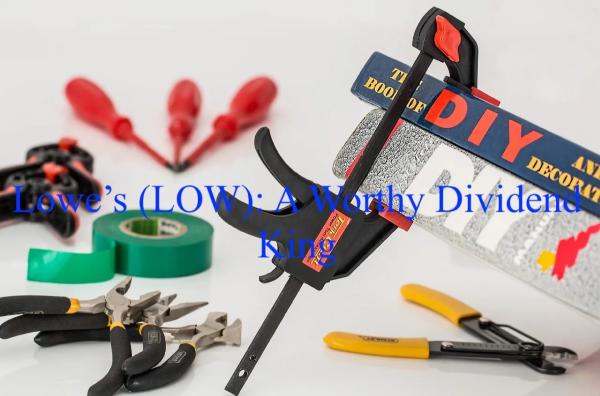

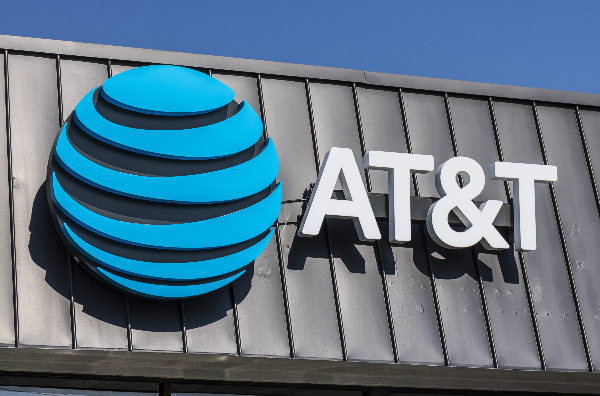

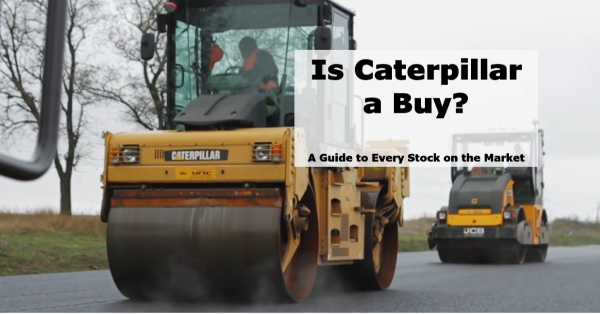
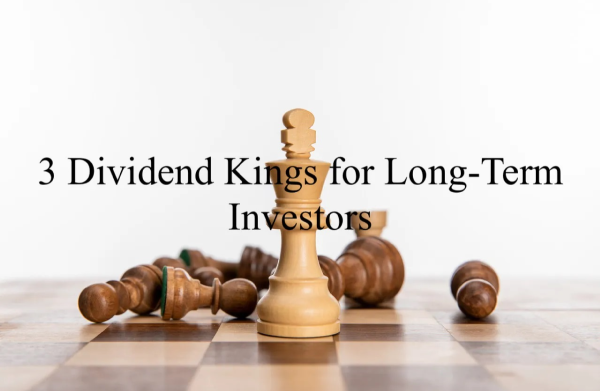

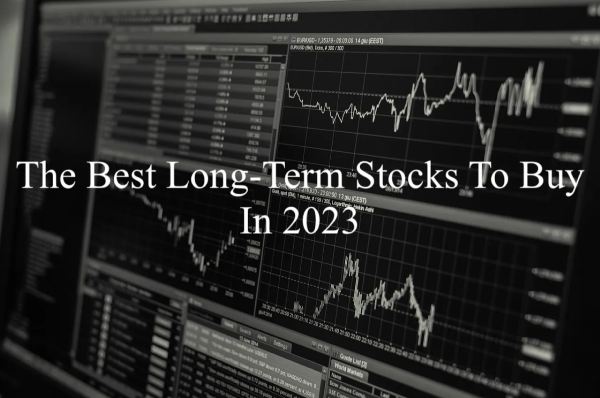




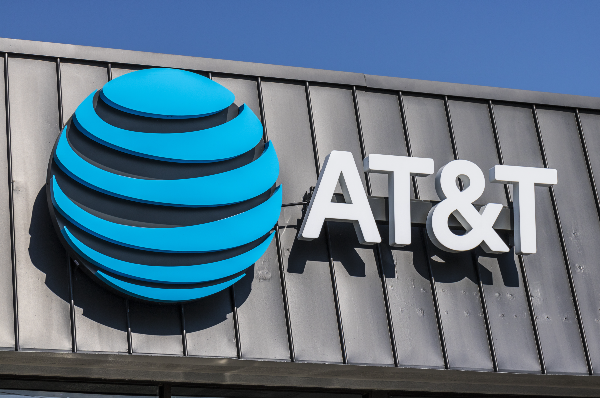




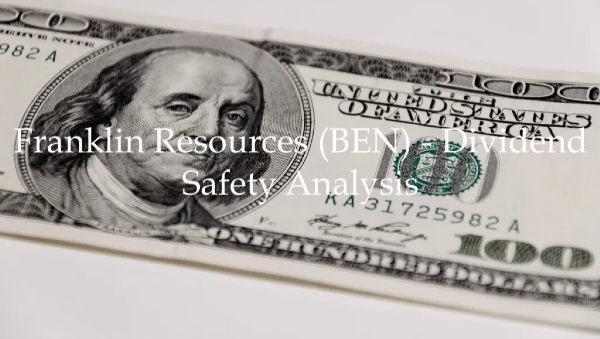












If you are looking for a high-quality dividend growth company, you will be very interested in our next undervalued stock. Today we will be discussing Lowe’s Companies, a Dividend King.
Lowe’s (LOW) is one company I have focused on, and it is an excellent area to pick up some shares. The stock is trading at $202.17 per share as of this writing. In this article, we will determine if the company is undervalued and deserving of our hard earn money.
Based on the Fastgraph chart, the stocks look to return over 17% per year for the next three years at the current price.
Source: Fastgraphs
Overview of Lowe’s Companies
Lowe’s Companies, Inc. is a retail company focused on home improvement, hardware, and appliance stores. It was established in 1946 and is headquartered in Mooresville, North Carolina, USA. Lowe’s operates a chain of retail stores across the United States, Canada, and Mexico, offering a comprehensive range of products for home improvement, such as appliances, tools, lumber, building materials, paint, flooring, and more.
LOW stock is down roughly 23% since its all-time high in December 2021. The main driver of the stock price decrease has nothing to do with the company itself, as earnings are expected to grow by 1% in 2023 and another 9% in 2024. Instead, it is due to the overall market being down because of recession fears and high interest rates. Also, the stock was very much overvalued in December 2021.
The current stock price of $202.18 (as of this writing) is correct at the mid-range of the 52-week range, between $170 and $223 per share. Thus, LOW seems like a stock in the right place to buy up shares.
Lowe’s (LOW): A Worthy Dividend King
Affiliate
Lowe’s Dividend Analysis
We will analyze LOW’s dividend history, growth, and yield, determining if it’s still a good buy at current prices.
Lowe’s is considered a Dividend King, a company that has increased its dividend for over 50 years. Lowe’s is also a Dividend Aristocrat and a Dividend Champion.
In this case, according to Divided Radar, the LOW stock has increased its dividend for 61 consecutive years. LOW’s most recent quarterly dividend increase was 31.3% to $1.05 per share, announced in May 2022. Investors should expect another dividend increase in May 2023.
Dividend Growth
Additionally, according to Portfolio Insight* , LOW has a five-year dividend growth rate of about 19.5%, which is impressive considering how fast inflation increased last year and this year. The 10-year dividend growth rate is higher at ~20%.
Source: Portfolio Insight*
Notably, the LOW stock continued to pay its dividend during the most challenging period in the last 100 years. Many businesses and industries cut or suspended dividend payments during the COVID-19 pandemic. However, unlike many other stocks, LOW continued to pay its dividend and increased them almost 10%. That is very noteworthy. This fact alone leads me to believe in the strength of the company and the fact that management is focused and committed to the dividend policy.
Dividend Yield
The company has an excellent dividend yield of approximately 2.1%, greater than the dividend yield of the S&P 500 Index. This dividend yield is an acceptable initial yield for dividend growth-driven investors. But it is not a suitable stock for income-driven investors who want a 4.0% yield or higher. However, with the company’s recent dividend increase rate, we can see over 5% yield-on-cost (YOC) in the next eight years.
Source: Portfolio Insight*
Lowe’s current dividend yield is higher than its 5-year average dividend yield of ~1.7%. I like to look at this metric because it gives me a good idea if a company I am researching is undervalued or overvalued based on the current and 5-year average yield. Stock price and dividend yield are inversely related. The dividend yield decreases if the stock price increases, and vice versa.
Dividend Safety
Is the current dividend safe? This metric is critical to look at as a dividend growth investor. Undervalued dividend stocks sometimes present a “value trap,” and the stock price can continue to decline.
We must look at two critical metrics to determine if the dividend payments are safe yearly. The first one is adjusted earnings per share (EPS), and then we must look into free cash flow (FCF) or operating cash flow (OCF) per share.
Analysts predict that LOW stock will earn an EPS of about $13.80 per share for the fiscal year (FY) 2023. Analysts are 75% accurate when forecasting Lowe’s future EPS. Also, the company beats these estimates 17% of the time. In addition, the company is expected to pay out $4.31 per share in dividends for the entire year. These numbers give a payout ratio of approximately 31% based on EPS, a conservative value, leaving the company with much room to continue to grow its dividend.
We are excited with a 31% dividend coverage, a dividend yield of ~2.1%, and high future growth. At this point, it will allow the company to continue to grow its dividend at a mid-teen-digit rate without sacrificing dividend safety. In addition, LOW has a dividend payout ratio of 30% on an FCF basis. Thus, the dividend is well covered in both EPS and FCF.
Lowe’s Revenue and Earnings Growth / Balance Sheet Strength
We will now look at how well LOW performed and grew its EPS and revenue throughout the years. When valuing a company, these two metrics are at the top of our list to study. Without revenue growth, a company can’t have sustainable EPS growth and continue paying a growing dividend.
LOW stock’s revenue has been growing reasonably at a compound annual growth rate (CAGR) of about 6.8% for the past ten years, according to Portfolio Insight*. Net income did much better with a CAGR of ~12.2% over the same ten-year period. However, EPS has grown 22.9% annually for the past ten years and at a CAGR of 25.6% over the past five years.
Source: Portfolio Insight*
Since revenue, net income, and FFO grew well over the years; we will determine if this stock is attractive based on its valuation and dividend yield. We will talk about the company’s valuation later in this article. In the meantime, analysts predict that the company will grow EPS at a 7.3% rate over the next five years.
Last year’s EPS increased from $11.97 per share in FY2021 to $13.73 per share for FY2022, an increase of 15%. Additionally, analysts expect the LOW stock to make an EPS of $13.80 per share for the fiscal year 2023, which would be a ~1% increase compared to FY2022. We like to see that future earnings continue to grow.
The company has a solid balance sheet. LOW has an S&P Global credit rating of BBB+, a lower-medium investment-grade rating. However, total and net debt have been rising. But currently the company has an acceptable balance sheet to overcome significant economic downturns, adding to the dividend safety.
LOW Stock’s Competitive Advantage
Lowe’s has several competitive advantages contributing to its home improvement retail industry success. For example, it has a wide range of products. Lowe’s offers a diverse and extensive range of products for home improvement, including appliances, tools, building materials, flooring, paint, and more. This broad product assortment allows customers to find all they need for their home improvement projects in one location, saving them time and effort.
In addition, with a strong retail presence, Lowe’s operates a large number of retail stores across the United States, Canada, and Mexico, providing customers with convenient access to its products and services. The company’s widespread retail presence allows it to serve a wide customer base and capture market share in different regions.
However, there are risks with an investment in LOWs stocks—for example, economic and market conditions. Economic and market conditions, such as changes in consumer spending patterns, housing market trends, and macroeconomic factors, influence Lowe’s financial performance. Also, weak economic conditions or downturns in the housing market could impact consumer demand for home improvement products and services, potentially affecting Lowe’s sales and profitability.
Also, competition. The home improvement retail industry is highly competitive, with Lowe’s facing competition from other major retailers, such as The Home Depot, and local and regional competitors. Intense competition could impact Lowe’s market share, pricing, and profitability and require ongoing investments in marketing and promotions to maintain competitive positioning.
Valuation for Lowe’s
One of the valuation metrics that I like to look for is the dividend yield compared to the past few years’ histories. I also want to look for a lower price-to-earnings (P/E) ratio based on the past 5-year or 10-year average. Lastly, I like to use the Dividend Discount Model (DDM). I use a DDM analysis because a business ultimately equals the sum of the future cash flow that that company can provide.
Let’s first look at the P/E ratio. LOW has a P/E ratio of ~14.7X based on FY 20223 EPS of $13.80 per share. The P/E multiple is excellent compared to the past 5-year P/E average of 23X. If LOW stock were to revert back to a P/E of 23X, we would obtain a price of $317 per share.
Now let’s look at the dividend yield. As we mentioned, the dividend yield currently is 2.1%. There is good upside potential as LOW’s 5-year dividend yield average is ~1.7%. For example, if LOW were to return to its dividend yield 5-year average, the price target would be $232.35.
The last item I like to look at to determine a fair price is the DDM analysis. I factored in a 10% discount rate and a long-term dividend growth rate of 8%. I use a 10% discount rate because of the lower current dividend yield. In addition, the projected dividend growth rate is conservative and lower than its past 5-year average. These assumptions give a fair price target of approximately $232.74 per share.
If we average the three fair price targets of $317, $232.35, and $232.74, we obtain a reasonable, fair price of $260.70 per share, giving LOW a possible upside of 29% from the current price of $202.18 share price.
Final Thoughts on Lowe’s (LOW)
Lowe’s is a high-quality company that should meet most investors’ requirements. The company has a market-beating 2.1% yield and a long-term dividend growth history. Past earnings growth has been excellent. But past performance does not mean it will be the same in the future. However, at the current price, the stock looks attractive.
Disclosure: I do not own shares of LOW
You can also read Federal Realty (FRT): A Dividend King REIT by the same author.
Originally Posted on dividendpower.org